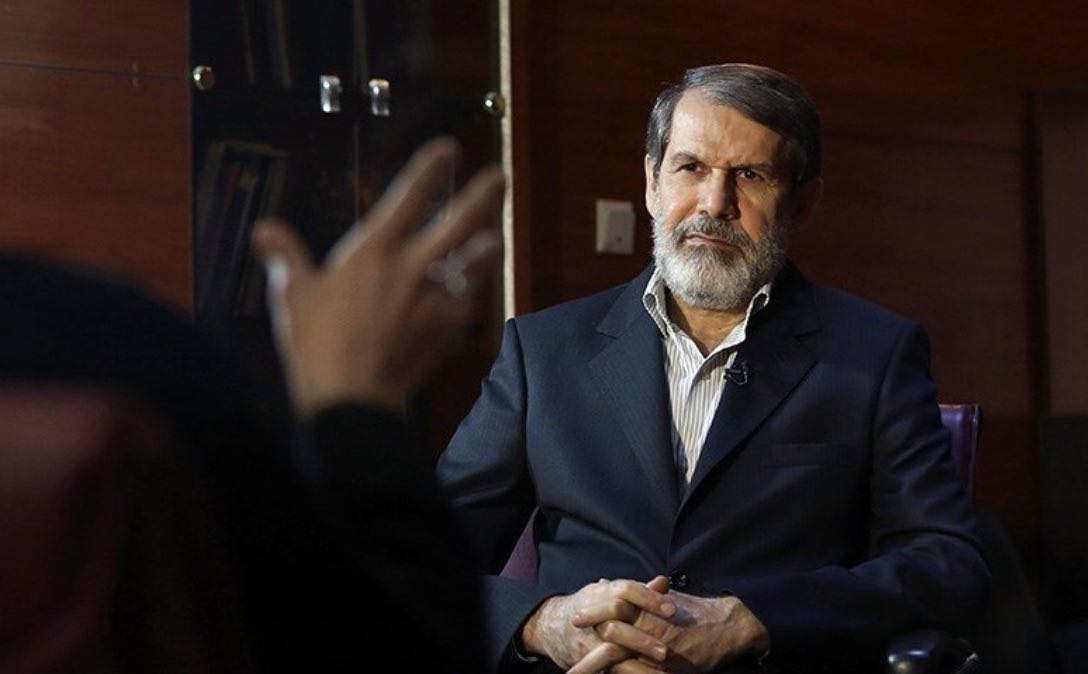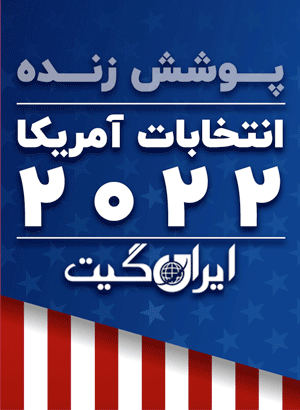Mahsouli, product, and student Mesbah
Mahsouli, product, and student Mesbah. According to a news report from Iran Gate, ‘The Steadfastness Front’, ‘The 88 Elections’, ‘The Legendary Wealth’, ‘The Urmia Ring’, each of these terms could remind one of a number of names, but the common denominator of all these terms becomes one person; ‘Sadeq Mahsouli’.
The story begins
He is 64 years old and was born in Urmia. His father was among the cloth merchants of the Urmia market. Before the revolution, he was accepted at the University of Science and Technology, where he studied civil engineering. It is likely there that Sadeq Mahsouli and Ahmadinejad started their friendship; Ahmadinejad also studied in the same university and in the same field. It is probable that Ahmadinejad was considered a senior to Mahsouli.
In 1980, before the start of the war, Mahsouli was appointed as the governor of his hometown, Urmia. Simultaneously, by the order of Mehdi Mahdavi-Kani, the then Minister of Interior, he was also the Deputy Political and Security Governor of West Azerbaijan Province. Reza Golpour, a historian of the Revolution, says about Mahsouli, ‘He was responsible for the cleansing of the left wing of the Ummah of Urmia during the governorships of Mr. Taheri and Mr. Ebrahimi.’
In October 1981, after the country’s IRGC was divided into 10 regions, the provinces of East and West Azerbaijan were named as the 5th region of the IRGC, and Mahsouli was appointed as the commander of IRGC Region 5. It is said that he, who was stationed in Tabriz, ‘left the region due to strong opposition from Hosseini, the Friday Imam of Urmia, and started working in Tehran.’
After commanding IRGC Region 5, he worked in the IRGC Inspection Deputy until 1985. He then became ‘Commander of the Special IRGC Division.’ The Special Division of the IRGC later merged with another division to form the 6th IRGC Legion, which was the operating force during the Kirkuk operation in 1986.
In that legion, Parviz Fattah served as the deputy commander, and Mahmoud Ahmadinejad was responsible for the legion’s engineering. The starting point for connecting the links of the Urmia Ring was precisely here; links that were connected at that time and probably remain connected to this day. Mahsouli, between 1988 and 1992, was an advisor to General Zolghadr, the head of the Joint Staff of the IRGC. According to Golpour, ‘Afterwards, for reasons including the then IRGC deputy commander Rahim Safavi’s disagreement with his promotion to the rank of full general, he resigned from the IRGC.’
Mahsouli began his economic activities at that time; his main activities were in the field of construction. Until 2005, Mahsouli was engaged in ‘economic work,’ but with the rise of Mahmoud Ahmadinejad’s government, a different destiny awaited him. Mahsouli, who had not been actively present in the world of politics,
later appeared in Mahmoud Ahmadinejad’s government; initially, Ahmadinejad intended to have him as the Minister of Oil in his first cabinet; precisely where many accusations and ambiguities swirled and continue to swirl around Mahsouli; allegations and ambiguities, one of which involved the ‘oil swap’ privilege in West Azerbaijan.
His nomination provoked strong reactions among parliamentarians. Gholamali Haddad-Adel, a representative from Qazvin in the seventh parliament, had stated, ’Mahsouli needs to explain how he acquired the expensive house, billion-dollar income, Mirdamad towers, and large lands in the Hasani Kia area.
Where did you get this from?
Ali Asghar Yousefnejad, a representative from Mashhad in the same parliament, referred to Ahmadinejad’s campaign video for the 2005 presidential elections and had said, ‘When the head of government shows a simple house of his own to the people, it’s better to invite a simple-living manager to the cabinet because even if Mr. Mahsouli’s wealth is halal, comparing it with Ahmadinejad’s simple house does not show harmony.’
At that time, suspicions about Mahsouli’s wealth, apart from the ‘oil swap’ stories, were also tied to his economic activities in ‘the private sector and the field of construction and housing projects.’ Nevertheless, Mahsouli denied claims about his legendary wealth and insisted he had participated in only 44 government tenders and auctions, winning only three of them.
However, the story of the legendary wealth of Ahmadinejad’s close friend became so noisy that exactly on the day Mahsouli was supposed to go to the parliament to defend himself and gain a vote of confidence, he announced his withdrawal in a letter to the parliament. In other words, Mahsouli probably, observing the parliamentary atmosphere and statements about his wealth, to prevent such issues from being raised from the parliament’s podium, gave up the ministry for peace and instead, Ahmadinejad appointed him as his advisor.
After Ali Kordan was impeached by the eighth parliament, Ahmadinejad introduced his long-time friend to lead the most important ministry of those days. The Ministry of Interior was supposed to hold the sensitive presidential elections a few months later.
Some believe Mahsouli’s task was to oversee the tenth presidential election; as he left the Ministry of Interior in September 2009. Two months later, he returned to Ahmadinejad’s cabinet; this time as the Minister of Welfare and Social Security until 2011.
Mahsouli’s Astronomical Wealth and Controversial Life
However, what always keeps Mahsouli a topic of discussion are the zeroes in his wealth; assets many consider to be legendary. In 2011, on the eve of the eighth parliamentary elections, the political atmosphere was similar to these days; the first voting after the elections held by Mahsouli in 2009.
Two conservative factions were competing with each other; for this reason, the newly established Steadfastness Front was competing with the conservative coalition, and hence, Ghasem Ravanbakhsh representing the Steadfastness Front and Alireza Zakani representing the conservative coalition debated each other. In this debate, Zakani says, ‘Mr. Sadeq Mahsouli, who claims his Khums (religious tax) is 450 million Tomans, it is clear what his work is with us, as our Khums is only 450 thousand Tomans.’
Ravanbakhsh responded to Zakani, ‘We are happy that you found someone like Sadeq Mahsouli to speak against the Steadfastness Front. If you had found embezzlement from him during his time as Minister of the Interior, you would have hung him from the moon. You should know that if someone’s wealth is legitimate, it is not a problem. In every election meeting, you raise the issue of Mr. Mahsouli’s 450 million Tomans Khums payment, which is not right.’
The Piggy Bank of the Steadfastness Front
In other words, if Mahsouli’s surplus assets at that time had a Khums of 450 million Tomans, the total of these assets would be 2 billion and 250 million Tomans. It should be noted that Khums does not apply to assets like residential homes used by the individual and their family, consumer cars, money used for livelihood, and other such personal properties; it is only calculated for surplus assets.
With this in mind, if Mahsouli’s surplus assets at that time were more than 2 billion Tomans, probably the legendary wealth of these days’ godfather of the Steadfastness Front and the several hundred square meters house in Dibaji, etc., must be accurate; a godfather who some believe acts as a cash machine for this hardline faction of conservatives.
Mahsouli as the Godfather
After the death of Mesbah Yazdi, the spiritual father of the Steadfastness followers, different approaches were seen in this political group; Morteza Aghatehrani, the hardline representative of the eleventh parliament, was the general secretary of Steadfastness, who took over this position a few months after his presence in the parliament. Even before this, Mahsouli was referred to as the ‘Godfather.’
This is because, during the formation of the conservative list and also during the power play for the parliamentary presidency elections, all paths of interaction with the Steadfastness led to him. Of course, when Haddad Adel was mediating between Steadfastness and Mohammad Bagher Ghalibaf, it was Morteza Aghatehrani, the then general secretary, who was assigned to attend the agreed-upon negotiations. Probably their godfather did not see himself in this position!
The current godfather of the Steadfastness does not have much interest in media presence but finally came out of the dark corridors of the Steadfastness Front a month or two ago and spoke in a student gathering; last week, he also appeared under the media lights at the general assembly of this political group and spoke at the assembly, which as the general secretary should not have happened otherwise.
Essentially, the role of Sadeq Mahsouli is more subject to criticism and discussion for his financial and economic role rather than his political actions. Mahsouli has never spoken about how he acquired such legendary wealth; this has led to much speculation around it; including claims of $160 million in assets in 2006, which he himself denies but at the same time does not specify the amount he considers correct.
It is unclear whether the suspicions about Mahsouli’s wealth are accurate or if his wealth accumulation follows the rule of ‘money begets money’; of course, to generate money, apart from such funds, other factors are also necessary, which Mahsouli has been and is well endowed with.


